Roasted Slopes
Exploring Côte-Rôtie: The Allure of Guigal's La Las Vineyards.
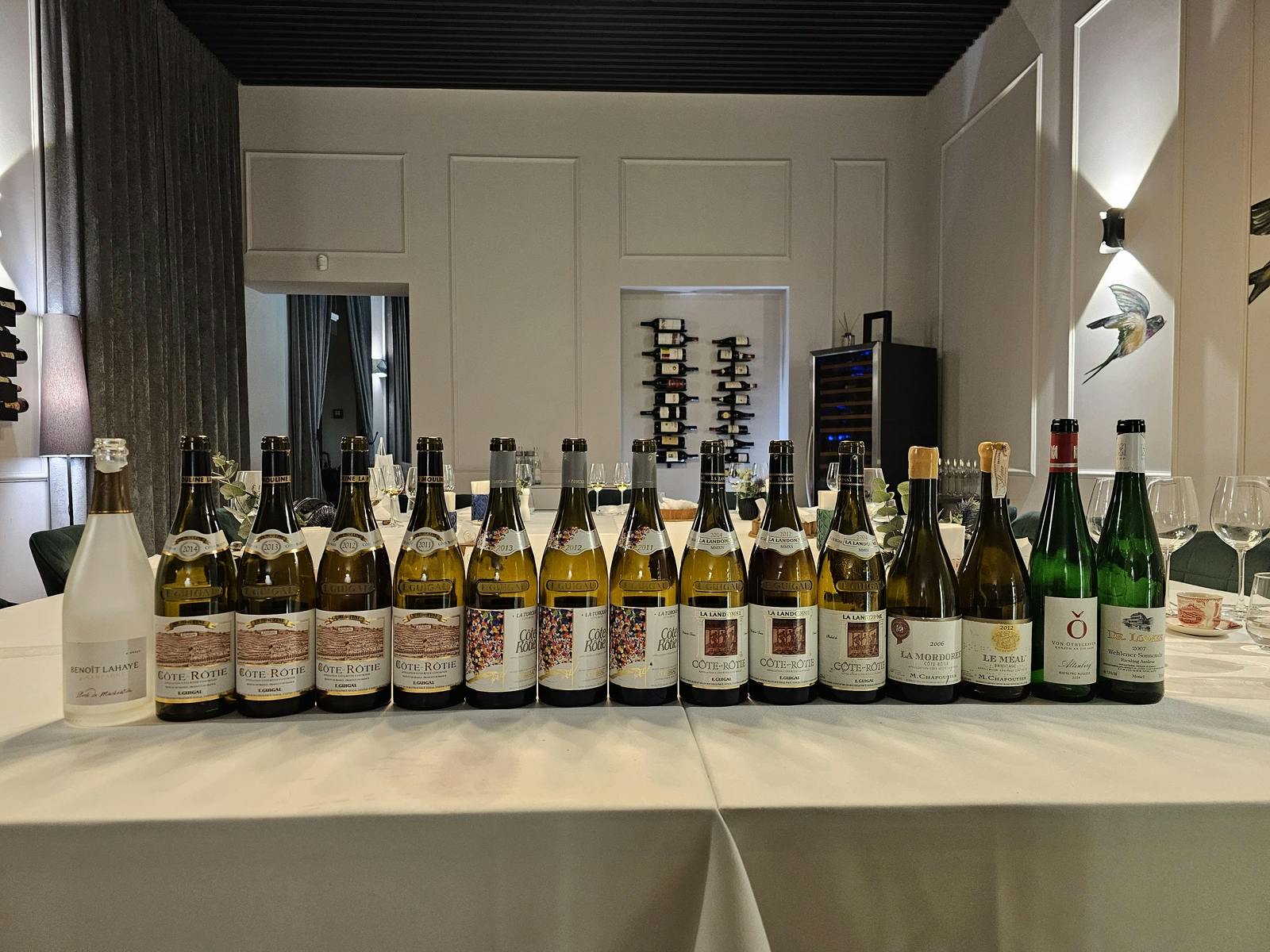
The world of wine is incredibly vast, even if your explorations are confined to maps and a glass. Due to my lack of formal education, I can often be surprised by something quite well-known that I am yet to learn about. Thus, when the offer to conduct a tasting of Côte-Rôtie, focusing on wines from Guigal, came up, I simply nodded, mentally trying to figure out how exactly these unfamiliar words are spelled - so that I could thoroughly read up on it at home later.
But as always, our walking encyclopedia, Maxim, swiftly provided us with context, sharing important details. Côte-Rôtie is the northernmost part of the Northern Rhône. It is literally a "roasted" slope, named for its long exposure to the sun and rocks that heat up and continue to emit warmth. In discussions about elegance, Zorick immediately dismissed the idea of adding Hermitage to the tasting, arguing that they are different styles and should not be mixed. It's easy to trust such knowledgeable professionals.
Yet, before tastings, I always try to read as much as possible (considering time constraints) to better consume the information from the glass. Of course, there is something magical in ignorance, protecting organoleptic impressions from the influence of obtrusive thoughts and the weight of famous names and titles. However, I am not too skilled a taster, so sometimes it's more important for me to have an answer to the simple question - why? Context often allows for a better understanding of one's own sensations of aroma and taste.
With these thoughts in mind, I naturally dived into the internet, opened The World Atlas of Wine by Jancis Robinson and Hugh Johnson, flipped through the relevant sections in The Sommelier's Atlas of Taste by Rajat Parr, and in The Oxford Companion to Wine by Jancis Robinson and Julia Harding. And, of course, everywhere they write about how prestigious this small appellation is, giving it special attention. They also mention the special role of Guigal in developing the region's reputation.
Of course, I am trying to come up with excuses, but discovering something like Côte-Rôtie in this fashion amplifies the anticipation of the event. So like a child before Christmas, I remind myself that sleep is an important thing, and one must arrive at the tasting well-rested.
Behold our meticulously crafted agenda. Naturally, we commenced with a sparkling entrant to awaken our palates, setting the stage for the more earnest tastings to follow. And, as is befitting of any discerning wine tasting, we concluded with a touch of sweetness, lending a delicious finish. Incidentally, did you observe Chapoutier's inclusion? We were intrigued to gauge its performance amidst such a distinguished lineup. In addition we failed to avoid Hermitage. What can I say? We, people, are weak against wine.
A few words about Côte-Rôtie
Côte-Rôtie is all about finesse and sometimes people don't seem to understand this.
— Stéphane Ogier
And while the internet and books are full of information, I will still jot down some facts that I think are important.
Let's start with the geography. Côte-Rôtie, as already mentioned, is the northernmost appellation of the Northern Rhône. It stretches along the steep slopes on the western bank of the Rhône River, opposite the village of Ampuis. The slopes here are sometimes so steep that people have to transport heavy items (such as a crate of grapes) on monorails. The internet is full of photographs where people, like mountain goats, stand on outcrops among the vines, which, forgetting fear and the laws of gravity, grow to their heart's content under the scorching sun.
Côte-Rôtie is divided into 73 lieux-dits, located in three communes. With the growing popularity of the appellation, people began to plant not only the original plots but also extend plantings around them. There are still disputes about the quality boundaries, but most agree on one thing - the original Côte-Rôtie is located precisely on the two most obvious slopes facing Ampuis - Côte Blonde and Côte Brune, named after the two main types of soil. Blonde is named for its pale-yellow gneiss, and Brune for its dark-brown schist rich in iron. The difference between these rocks lies in the amount of clay in their composition - gneiss has less, and accordingly, the drainage here is more robust, resulting in wines from Côte Blonde typically being lighter and more aromatic. On the other hand, Côte Brune produces wines that are more powerful, structured, and long-lasting. But this is what the books say, and before me stand bottles that may either confirm or refute these theories.
If for a long time, people simply mixed grapes from these two communes, then in the 1980s, Guigal decided to change this trend by starting to produce separate wines from individual vineyards. The family's wines turned out so exceptional that they brought not only fame to themselves but also to the three plots collectively known as La Las - La Landonne, La Mouline, and La Turque. And of course, today there are other stars in the appellation, but about them, I hope, we will talk more later.
Regarding the grape varieties, it's quite simple here. Côte-Rôtie is the realm of Syrah. Although by law up to 20% Viognier is allowed, in practice, few even exceed 10%, as Viognier, while adding fruitiness, floral notes, and texture, can also take away crucial acidity. But importantly, only co-fermentation of the two varieties is allowed in the region.
Benoît Lahaye Rosé de Macération a Bouzy (d2023) NV
- Region
- France » Champagne » Champagne AOC » Montagne de Reims » Bouzy
- Type
- rose traditional sparkling, extra brut
- Producer
- Vintage
- NV
- Disgorged
- 2023-11
- On lees
- N/A
- Grapes
- Pinot Noir
- Alcohol
- 12.5
- Sugar
- 2.3
- Volume
- 750 mL

This wine secured the 🏅 14th place in our wine tasting lineup.
E. Guigal Côte-Rôtie La Mouline
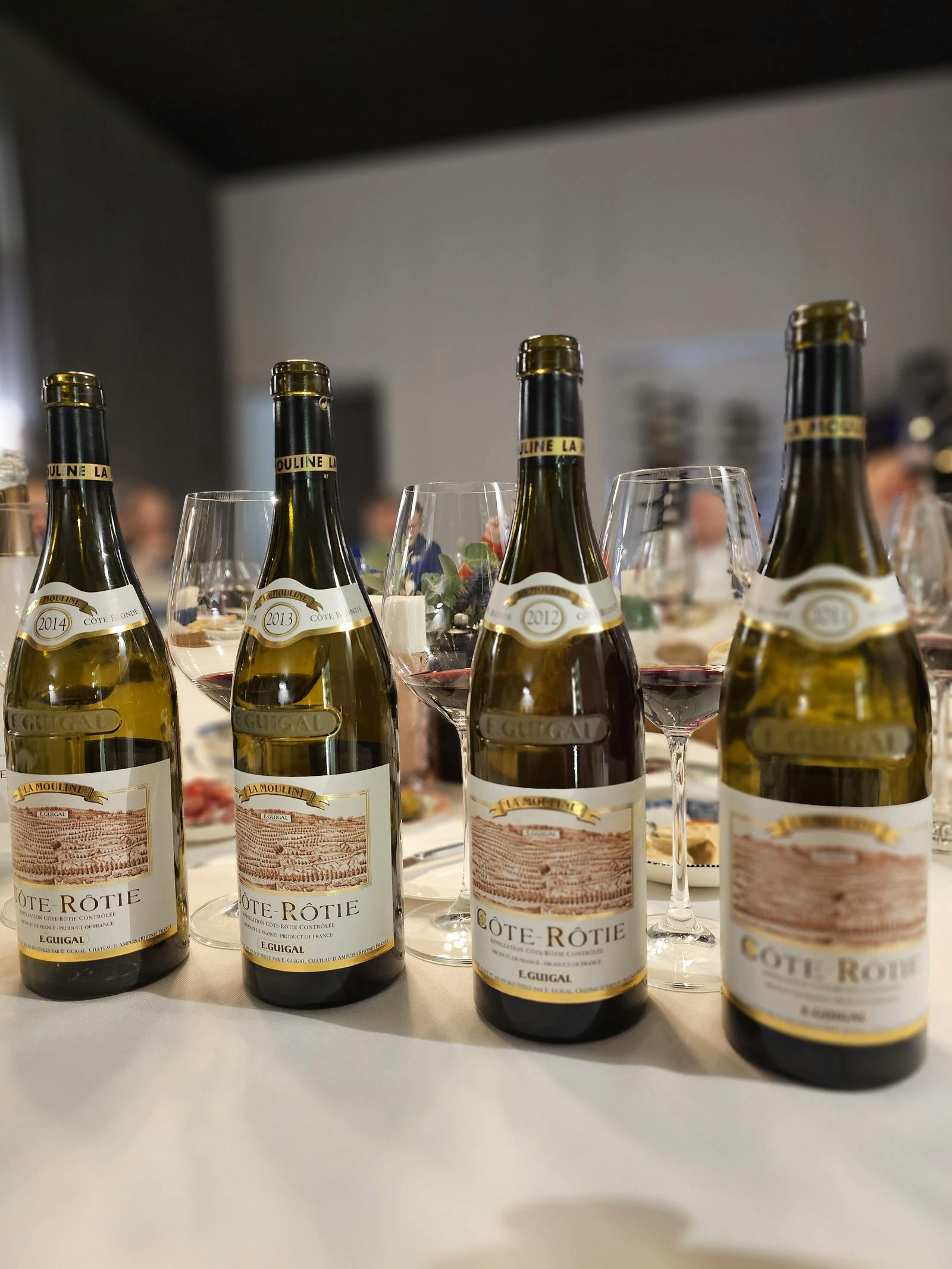
La Mouline from Côte Blonde combines 89% Syrah and 11% Viognier, hailing from vines aged over 75 years. The vineyard, reminiscent of a Roman amphitheatre with its terraced structure, is rooted in gneiss featuring lightly colored silicone soil and limestone loess. In the vinification process, thermoregulated stainless steel tanks are employed, along with traditional pumping over techniques. The blend undergoes alcoholic fermentation and a four-week maceration period. This is followed by a significant maturation period of 42 months in new oak barrels.
La Mouline 2014
- Region
- France » Rhône » Côte-Rôtie AOC
- Type
- red still, dry
- Producer
- Vintage
- 2014
- Grapes
- Syrah, Viognier
- Alcohol
- 13
- Volume
- 750 mL
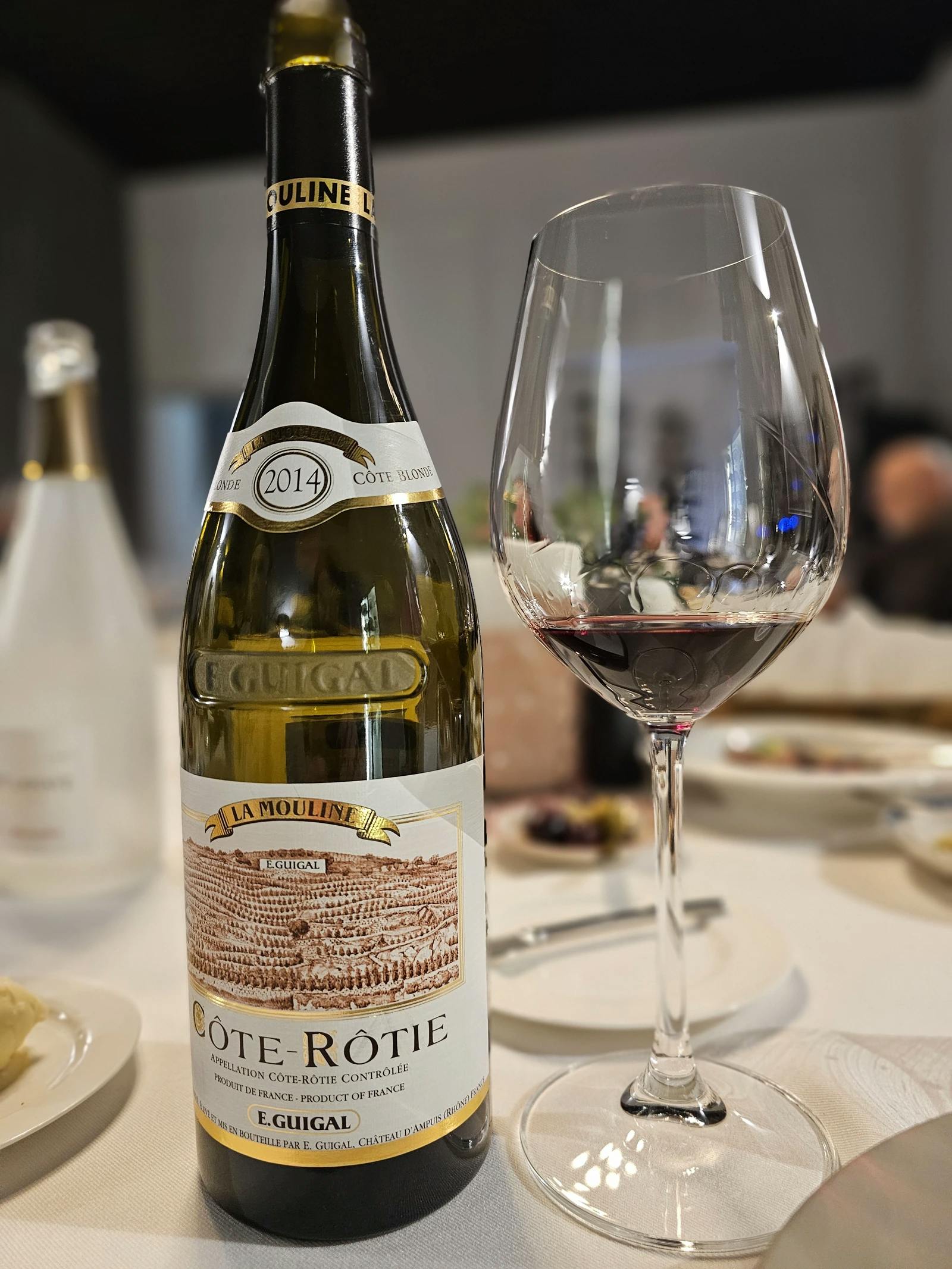
This wine secured the 🏅 8th place in our wine tasting lineup.
La Mouline 2013
- Region
- France » Rhône » Côte-Rôtie AOC
- Type
- red still, dry
- Producer
- Vintage
- 2013
- Grapes
- Syrah, Viognier
- Alcohol
- 13.5
- Volume
- 750 mL
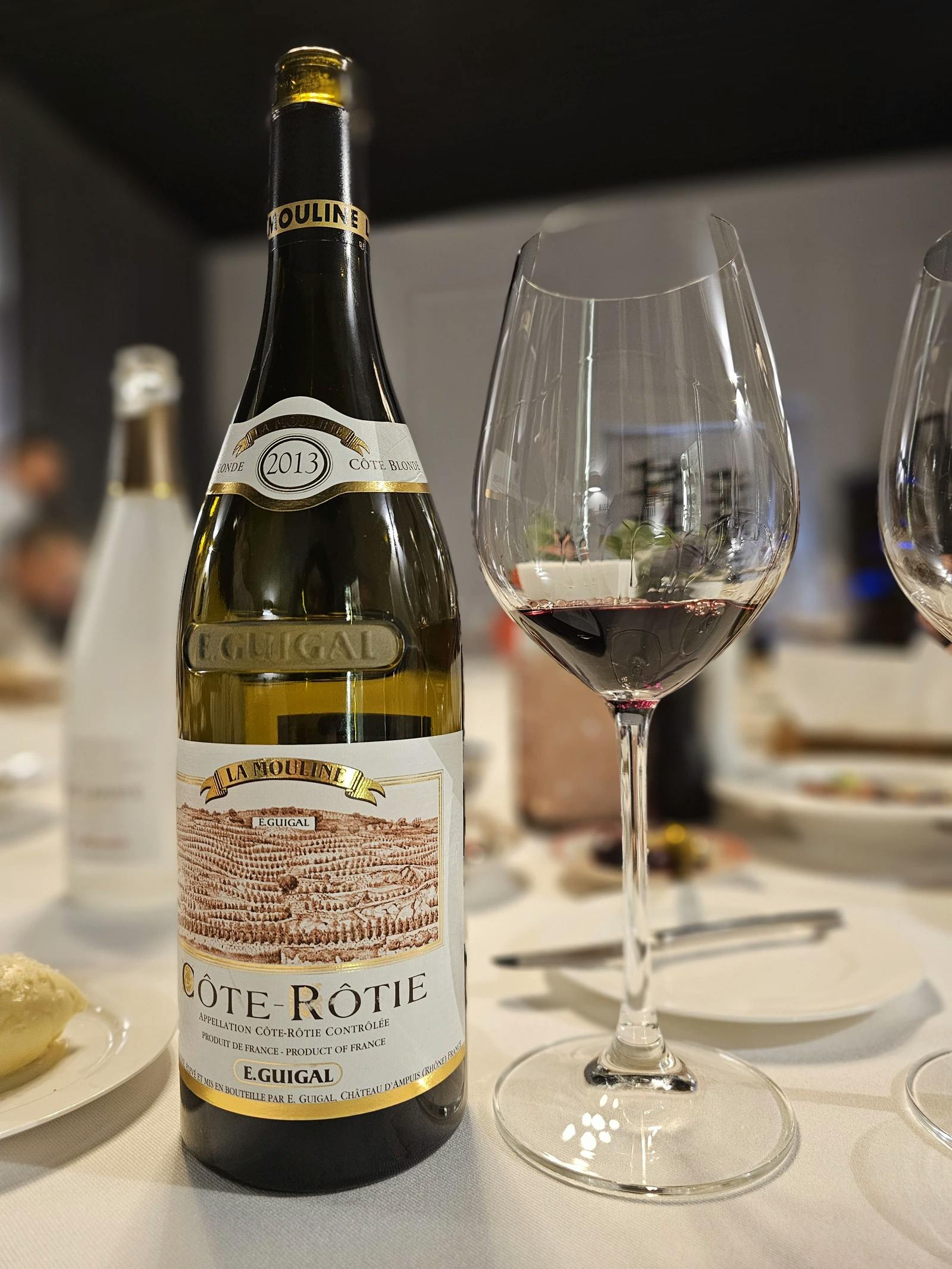
This wine secured the 🏅 11th place in our wine tasting lineup.
La Mouline 2012
- Region
- France » Rhône » Côte-Rôtie AOC
- Type
- red still, dry
- Producer
- Vintage
- 2012
- Grapes
- Syrah, Viognier
- Alcohol
- 13.5
- Volume
- 750 mL
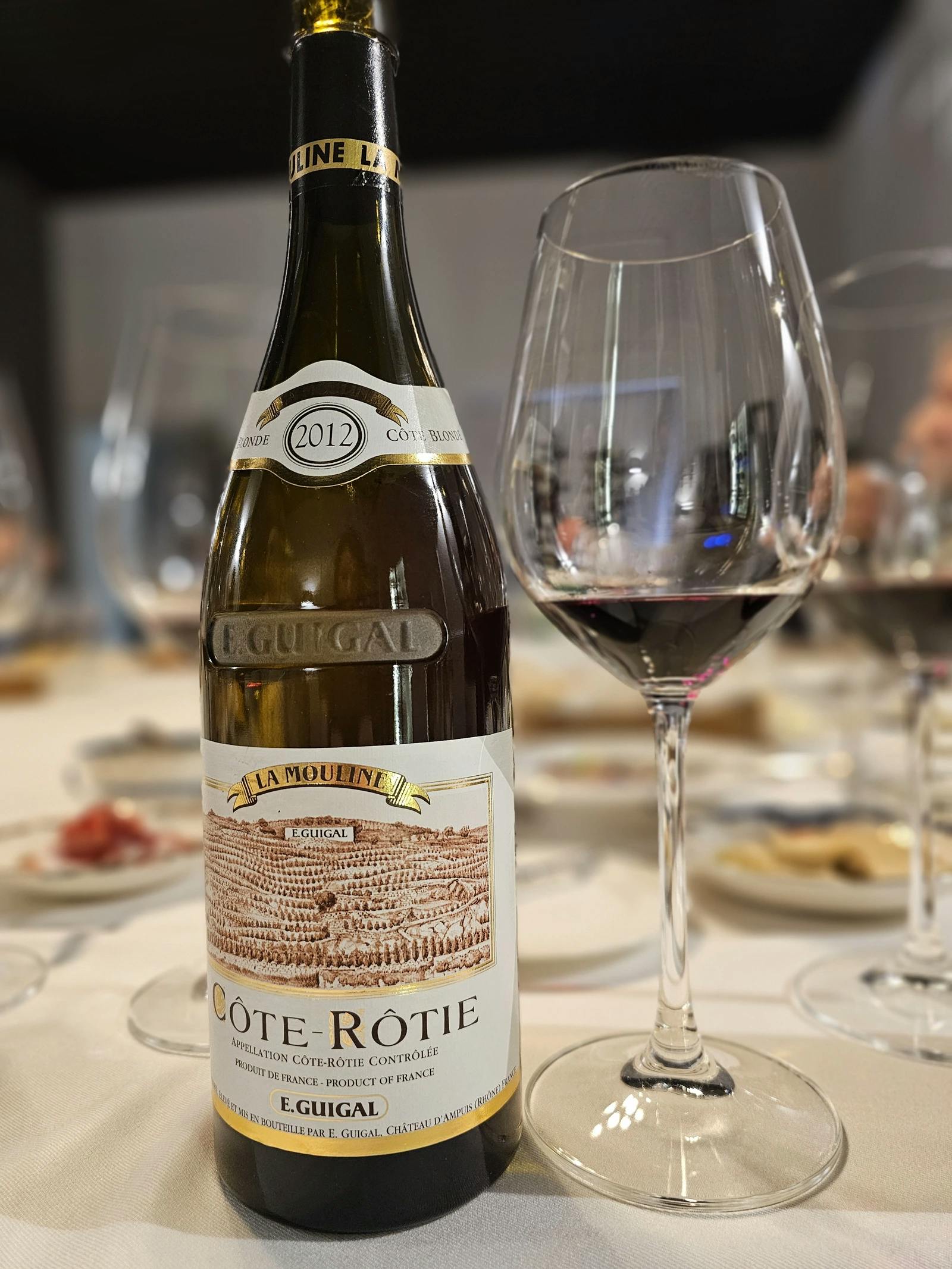
This wine secured the 🥉 3rd place in our wine tasting lineup.
La Mouline 2011
- Region
- France » Rhône » Côte-Rôtie AOC
- Type
- red still, dry
- Producer
- Vintage
- 2011
- Grapes
- Syrah, Viognier
- Alcohol
- 13.5
- Volume
- 750 mL
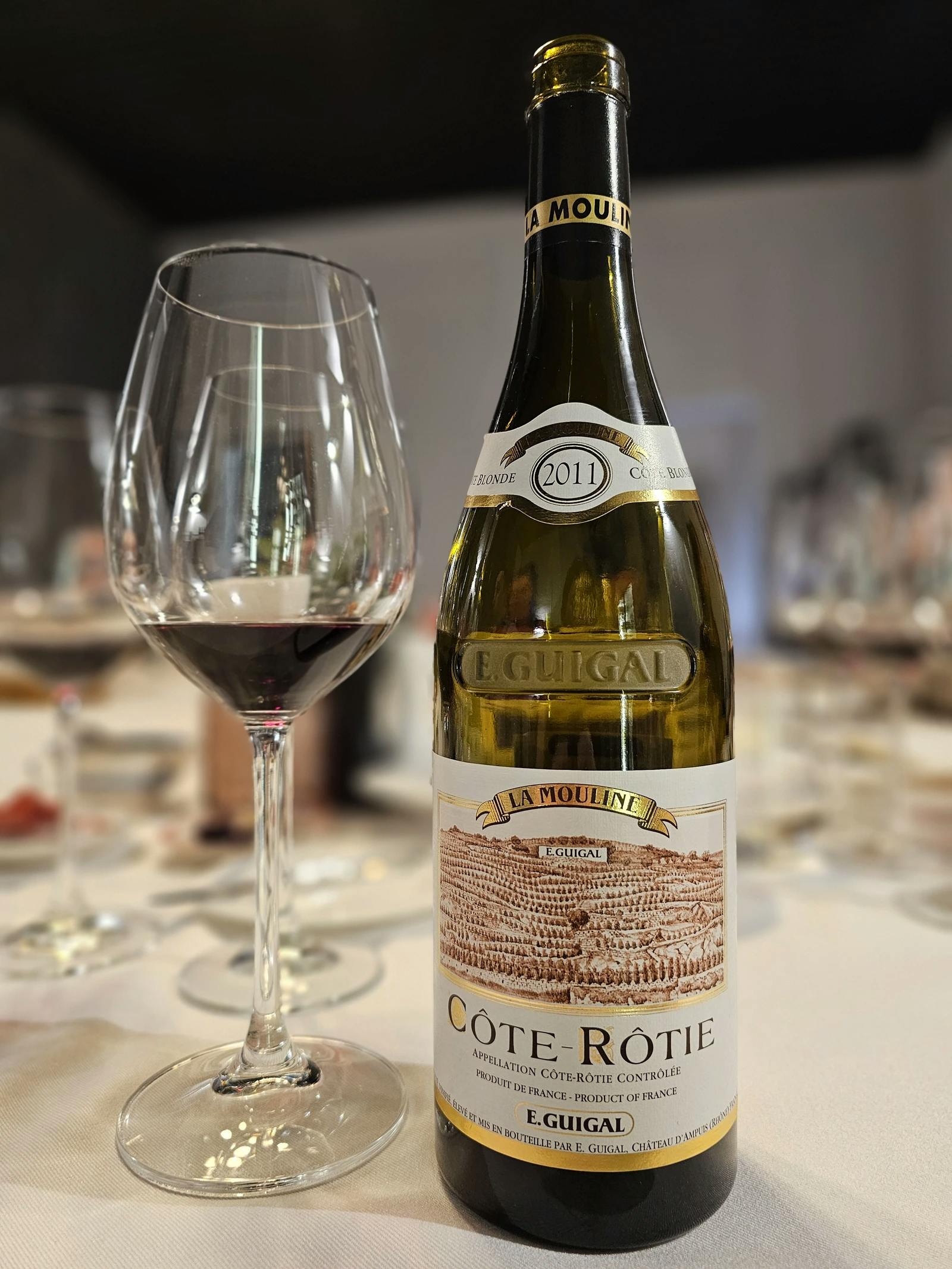
This wine secured the 🥈 2nd place in our wine tasting lineup.
E. Guigal Côte-Rôtie La Turque
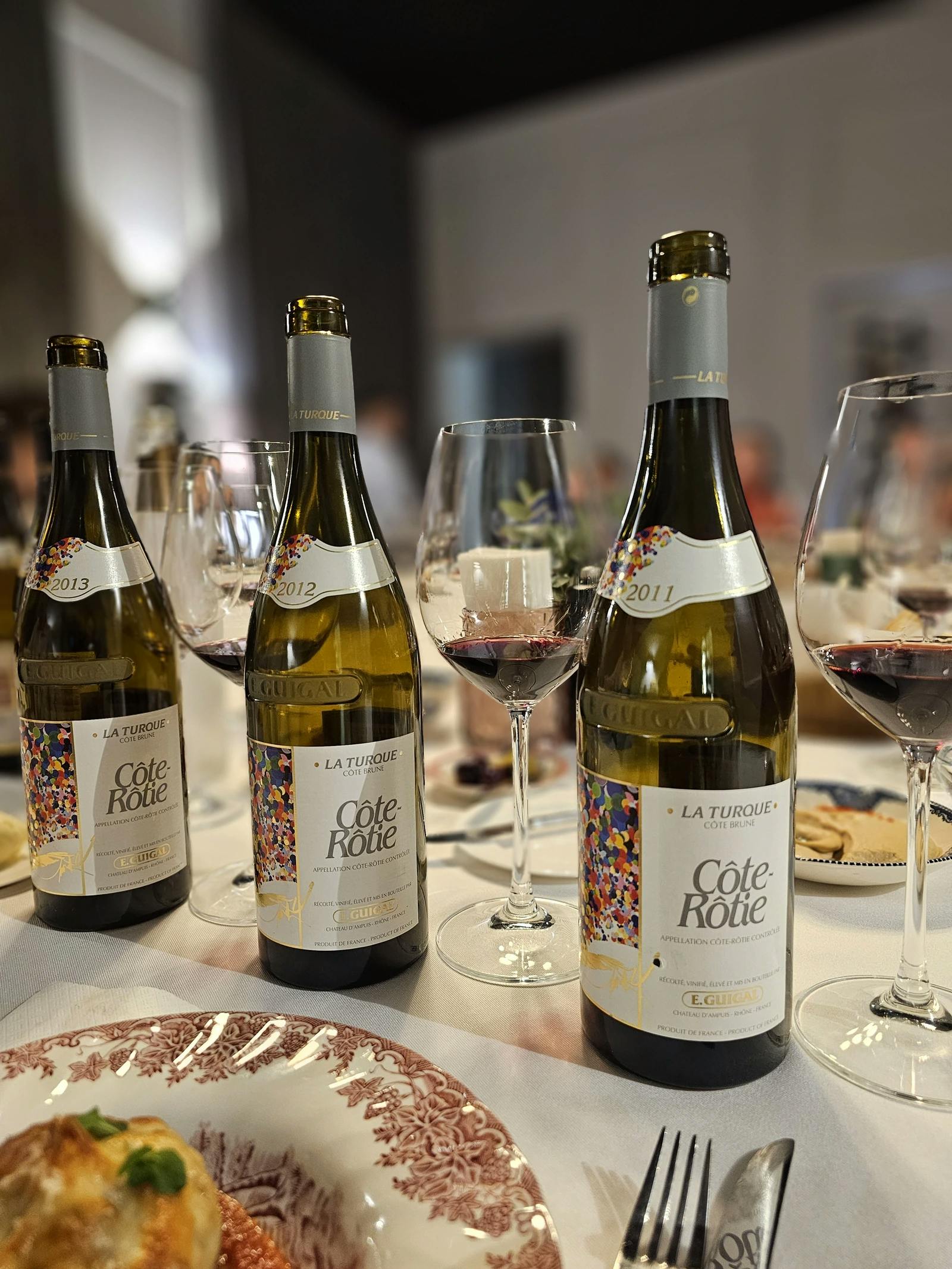
La Turque from Côte Brune is a blend of 93% Syrah and 7% Viognier, originating from vines that are over 25 years old and rooted in silicone limestone with schist-producing clay soil, abundant in iron oxide. The winemaking process involves the use of thermoregulated stainless steel tanks and automated punching down to enhance extraction. The blend undergoes alcoholic fermentation coupled with a four-week maceration period. This meticulous process is followed by a substantial aging phase of 42 months in new oak barrels.
La Turque 2013
- Region
- France » Rhône » Côte-Rôtie AOC
- Type
- red still, dry
- Producer
- Vintage
- 2013
- Grapes
- Syrah, Viognier
- Alcohol
- 13.5
- Volume
- 750 mL
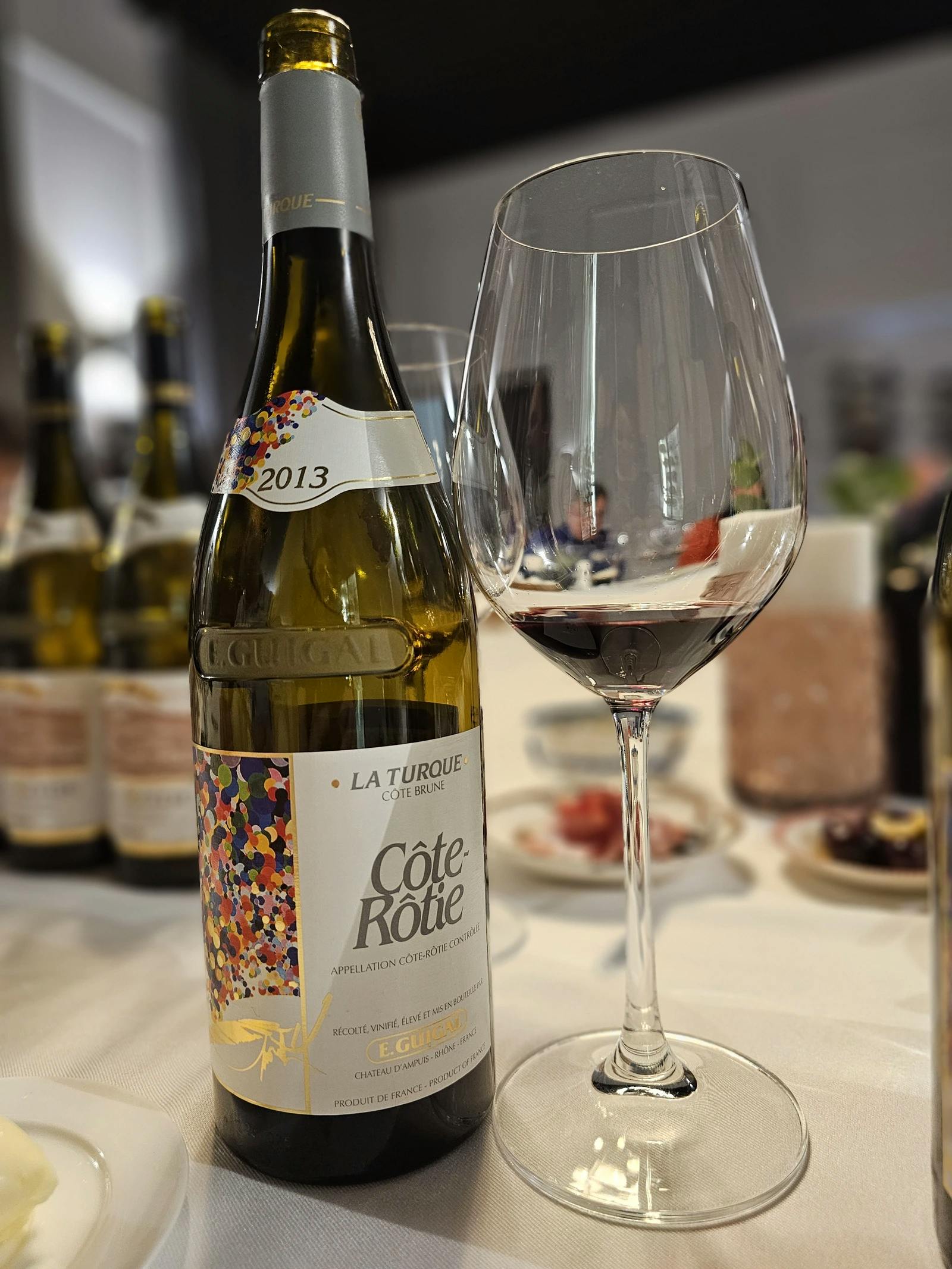
This wine secured the 🏅 7th place in our wine tasting lineup.
La Turque 2012
- Region
- France » Rhône » Côte-Rôtie AOC
- Type
- red still, dry
- Producer
- Vintage
- 2012
- Grapes
- Syrah, Viognier
- Alcohol
- 13.5
- Volume
- 750 mL
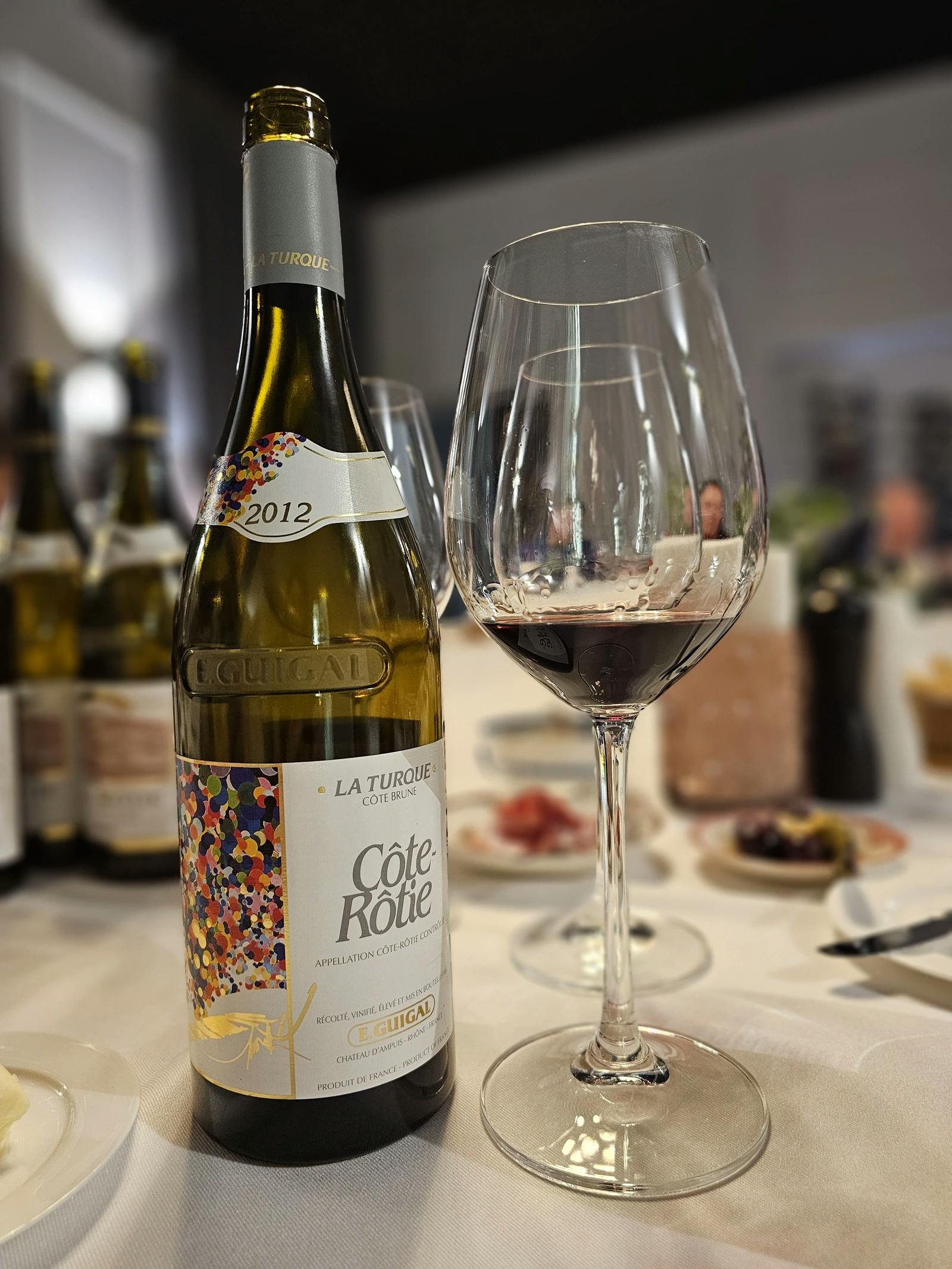
This wine secured the 🏅 4th place in our wine tasting lineup.
La Turque 2011
- Region
- France » Rhône » Côte-Rôtie AOC
- Type
- red still, dry
- Producer
- Vintage
- 2011
- Grapes
- Syrah, Viognier
- Alcohol
- 13.5
- Volume
- 750 mL
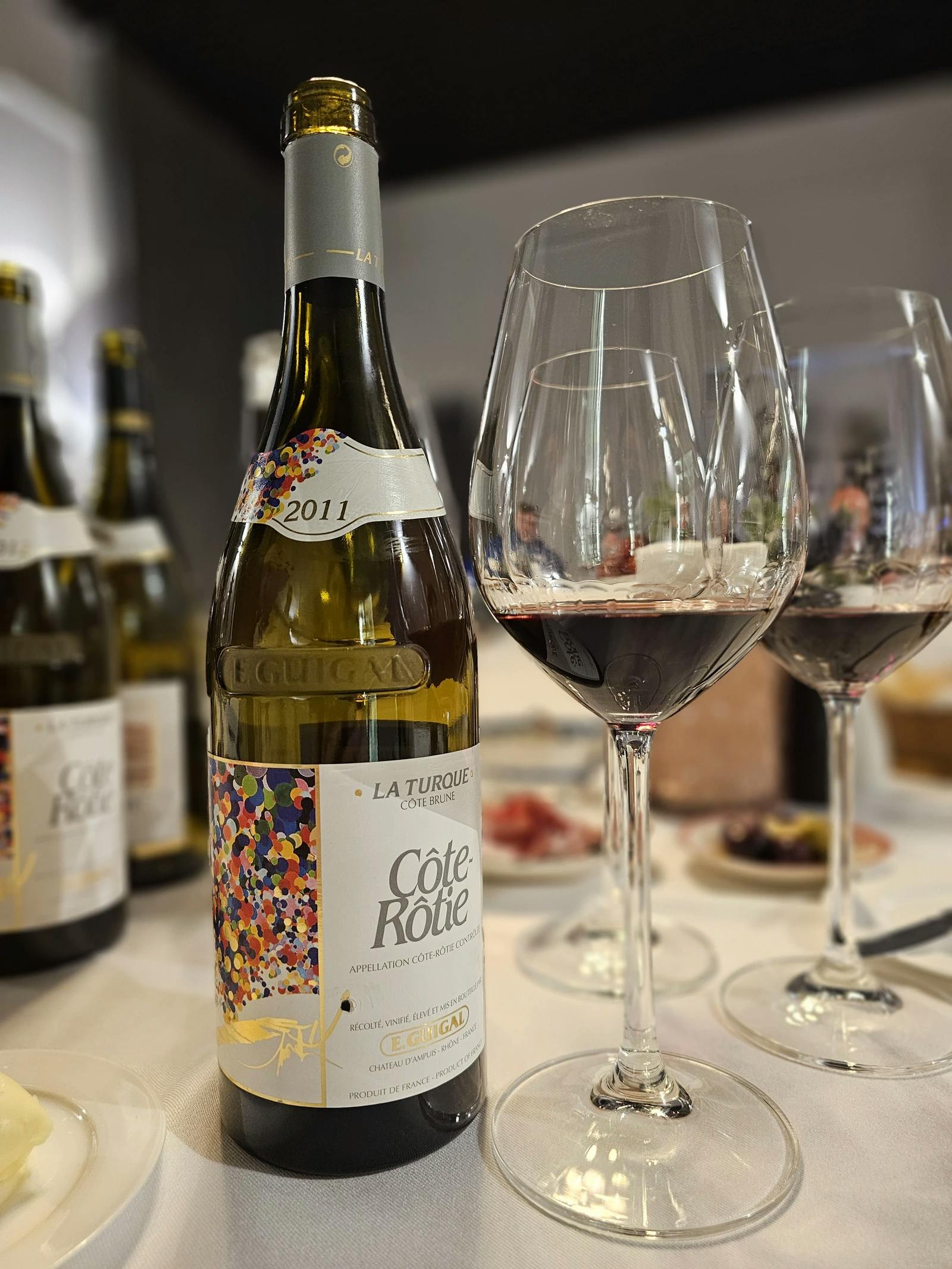
This wine secured the 🏅 10th place in our wine tasting lineup.
E. Guigal Côte-Rôtie La Landonne

La Landonne from Côte Brune is crafted solely from Syrah, with the grapes sourced from vines aged over 35 years, thriving in limestone clay rich in iron oxide. The vinification involves the use of thermoregulated stainless steel tanks, continuous pumping over for even blending, and a minimum four-week maceration during alcoholic fermentation. This is followed by an extensive 42-month aging process in new oak barrels.
La Landonne 2014
- Region
- France » Rhône » Côte-Rôtie AOC
- Type
- red still, dry
- Producer
- Vintage
- 2014
- Grapes
- Syrah
- Alcohol
- 13
- Volume
- 750 mL

This wine secured the 🏅 5th place in our wine tasting lineup.
La Landonne 2012
- Region
- France » Rhône » Côte-Rôtie AOC
- Type
- red still, dry
- Producer
- Vintage
- 2012
- Grapes
- Syrah
- Alcohol
- 13.5
- Volume
- 750 mL
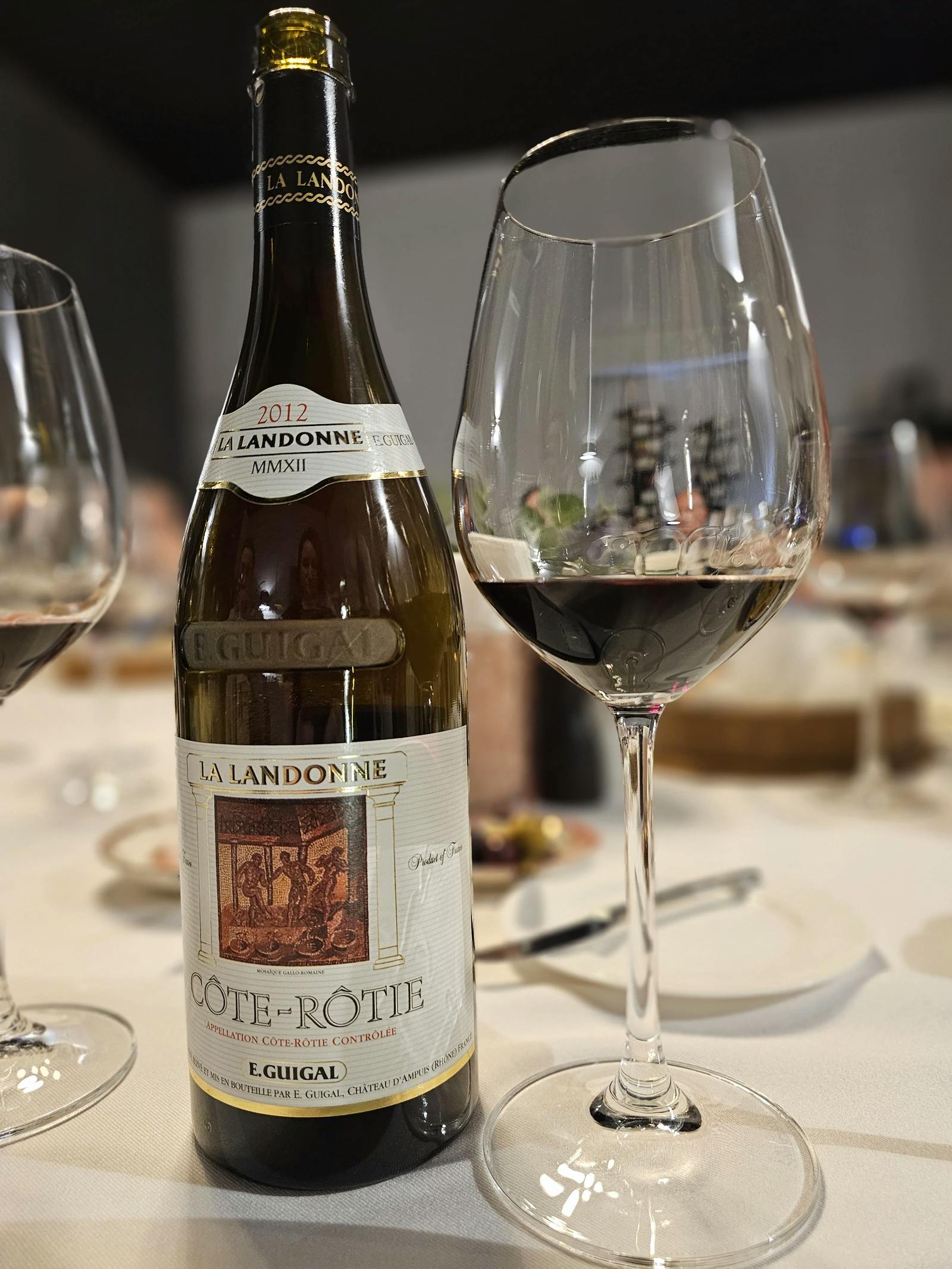
This wine secured the 🥇 1st place in our wine tasting lineup.
La Landonne 2004
- Region
- France » Rhône » Côte-Rôtie AOC
- Type
- red still, dry
- Producer
- Vintage
- 2004
- Grapes
- Syrah
- Alcohol
- 13
- Volume
- 750 mL
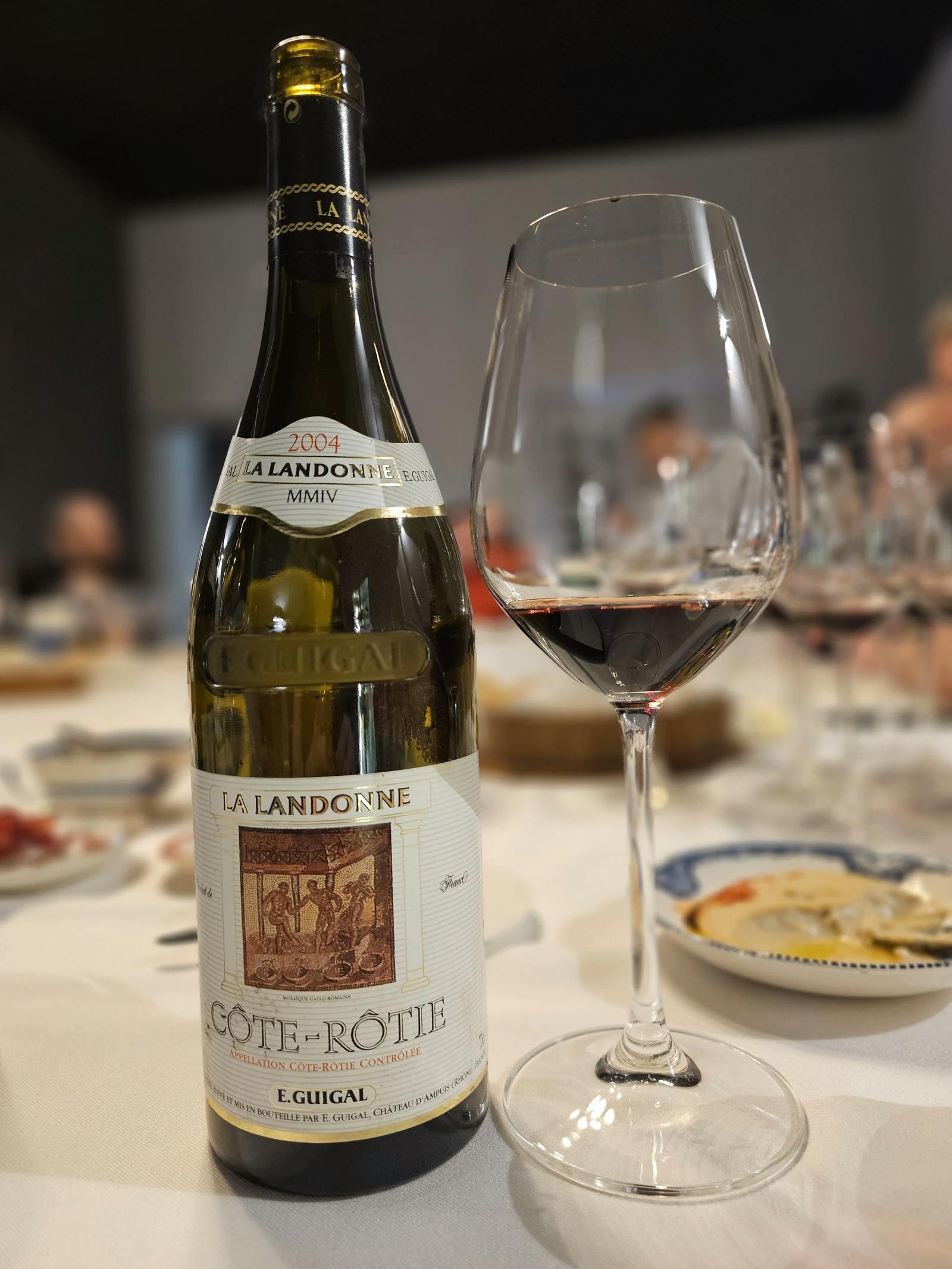
This wine secured the 🏅 6th place in our wine tasting lineup.
Chapoutier Côte-Rôtie La Mordorée 2006
- Region
- France » Rhône » Côte-Rôtie AOC
- Type
- red still, dry
- Producer
- Vintage
- 2006
- Grapes
- Syrah
- Alcohol
- 13.5
- Volume
- 750 mL
- Find at

This wine secured the 🏅 9th place in our wine tasting lineup.
This wine is a pure Syrah, made from vines with an average age exceeding 60 years. These venerable vines are deeply rooted in a unique soil composition of chlorite and ferruginous mica-schists, interspersed with loess depressions and earth veins. The vineyard plot, located on the fringe of the Côte Blonde, contributes to the distinct character of the wine. In the vinification process, the grapes are entirely destemmed and vinified in concrete tanks. Daily pumping over is conducted to ensure thorough extraction of color and tannins, with the fermentation temperature carefully maintained below 32°C. Only the free-run juice is selected for this wine. The aging process is carried out entirely in oak casks (225 liters), with a varying proportion of new barrels, lasting between 14 and 18 months.
Chapoutier Ermitage Le Méal 2012
- Region
- France » Rhône » Hermitage AOC
- Type
- red still, dry
- Producer
- Wine
- Vintage
- 2012
- Grapes
- Syrah
- Alcohol
- 14
- Sugar
- 2
- Volume
- 750 mL
- Find at
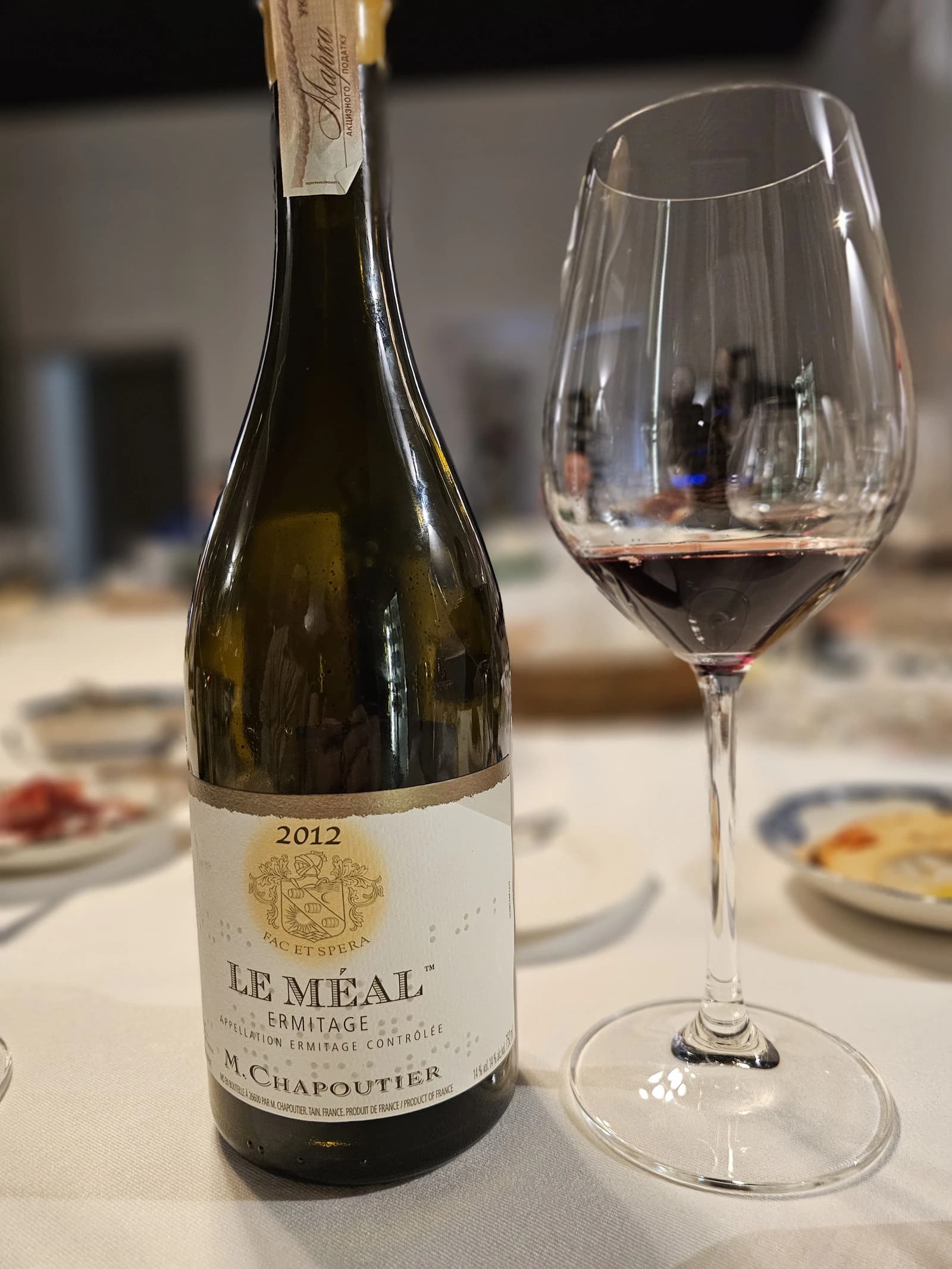
This wine secured the 🏅 13th place in our wine tasting lineup.
Von Othegraven Altenberg Riesling Auslese 2016
- Region
- Germany » Mosel » Prädikatswein
- Type
- white still, sweet
- Producer
- Vintage
- 2016
- Grapes
- Riesling
- Alcohol
- 7.5
- Volume
- 750 mL
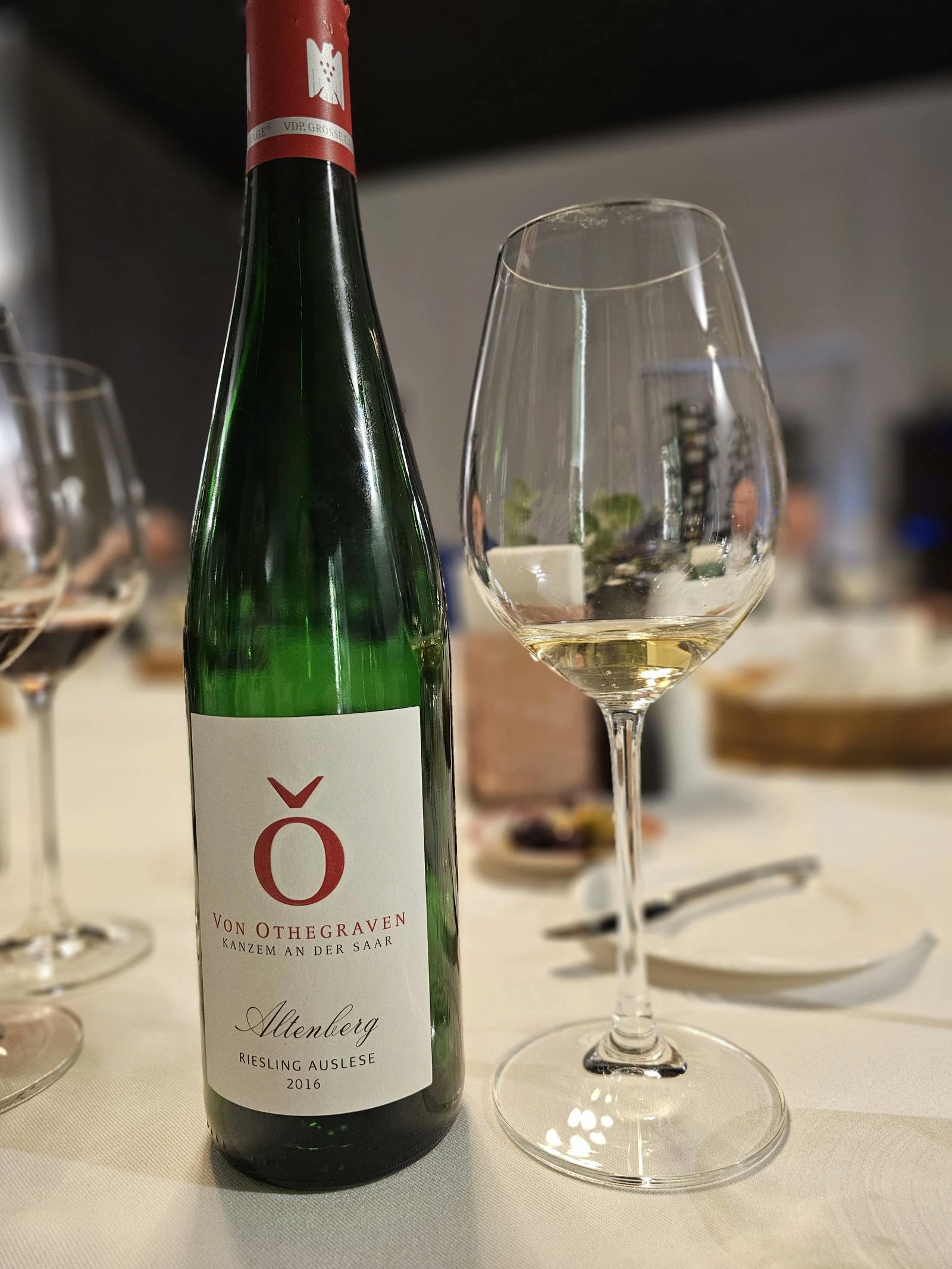
This wine secured the 🏅 12th place in our wine tasting lineup.
Dr. Loosen Wehlener Sonnenuhr Riesling Auslese Prädikatswein 2007
- Region
- Germany » Mosel » Prädikatswein
- Type
- white still, sweet
- Producer
- Vintage
- 2007
- Grapes
- Riesling
- Alcohol
- 7.5
- Sugar
- 97.3
- Volume
- 750 mL

This wine secured the 🏅 15th place in our wine tasting lineup.